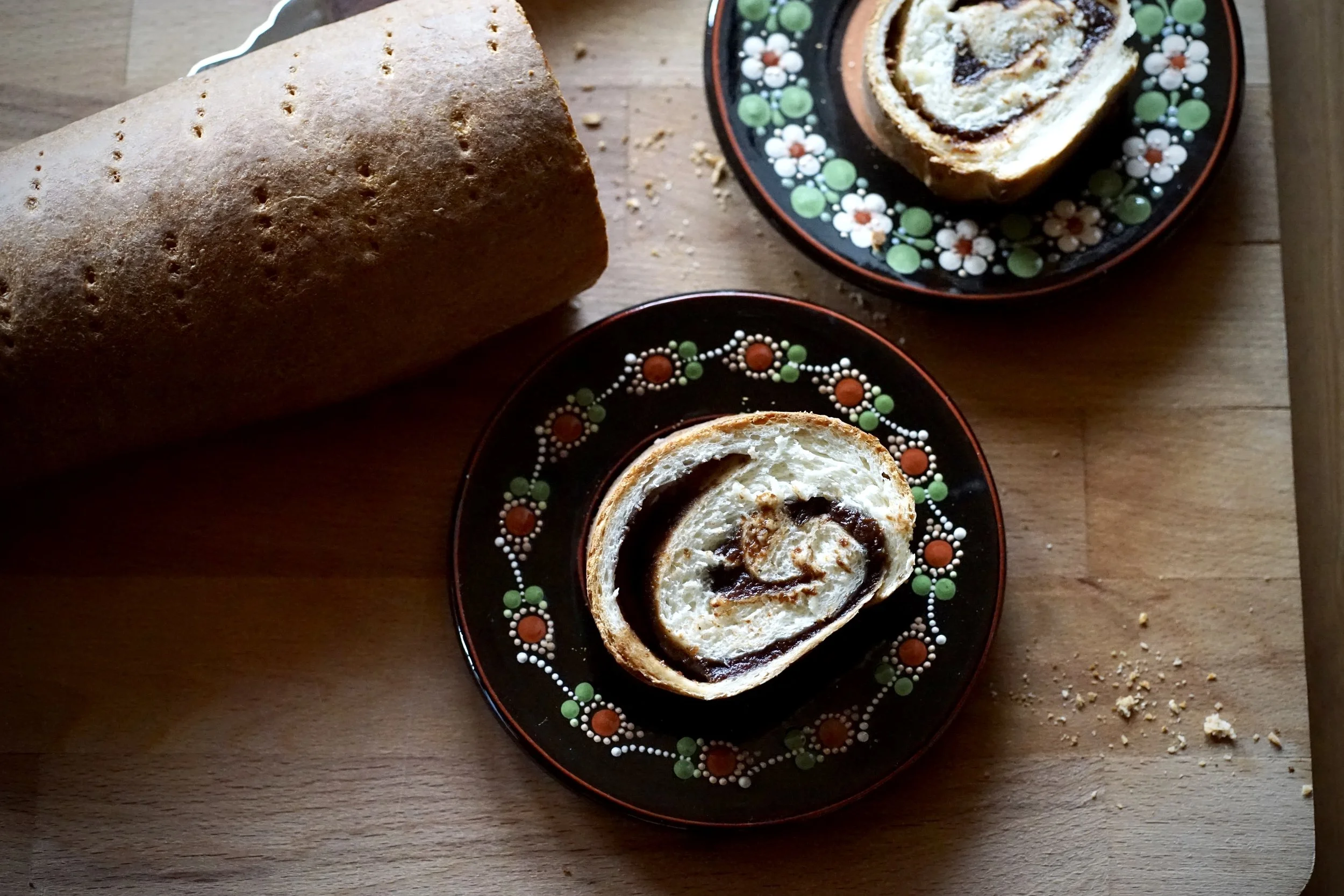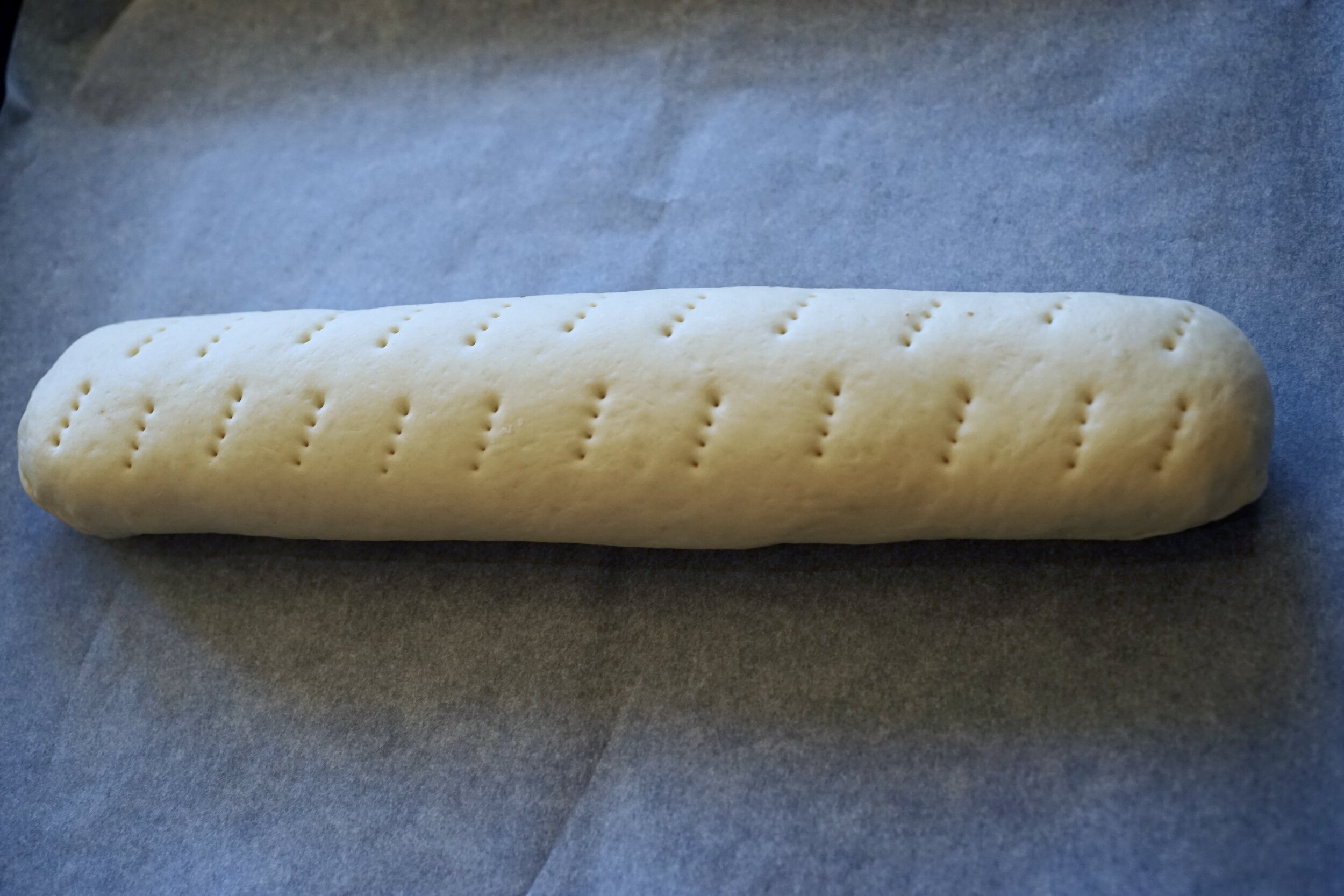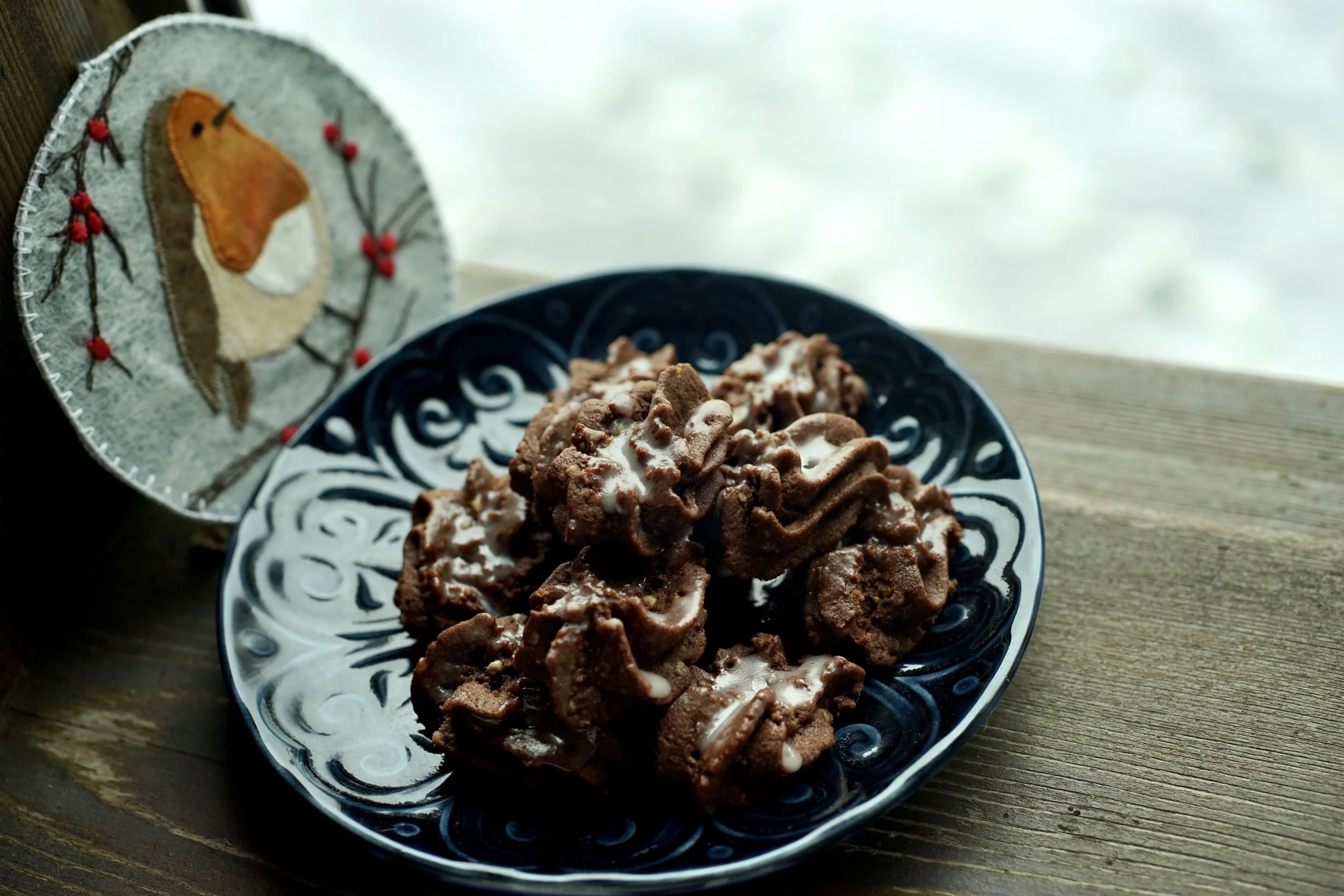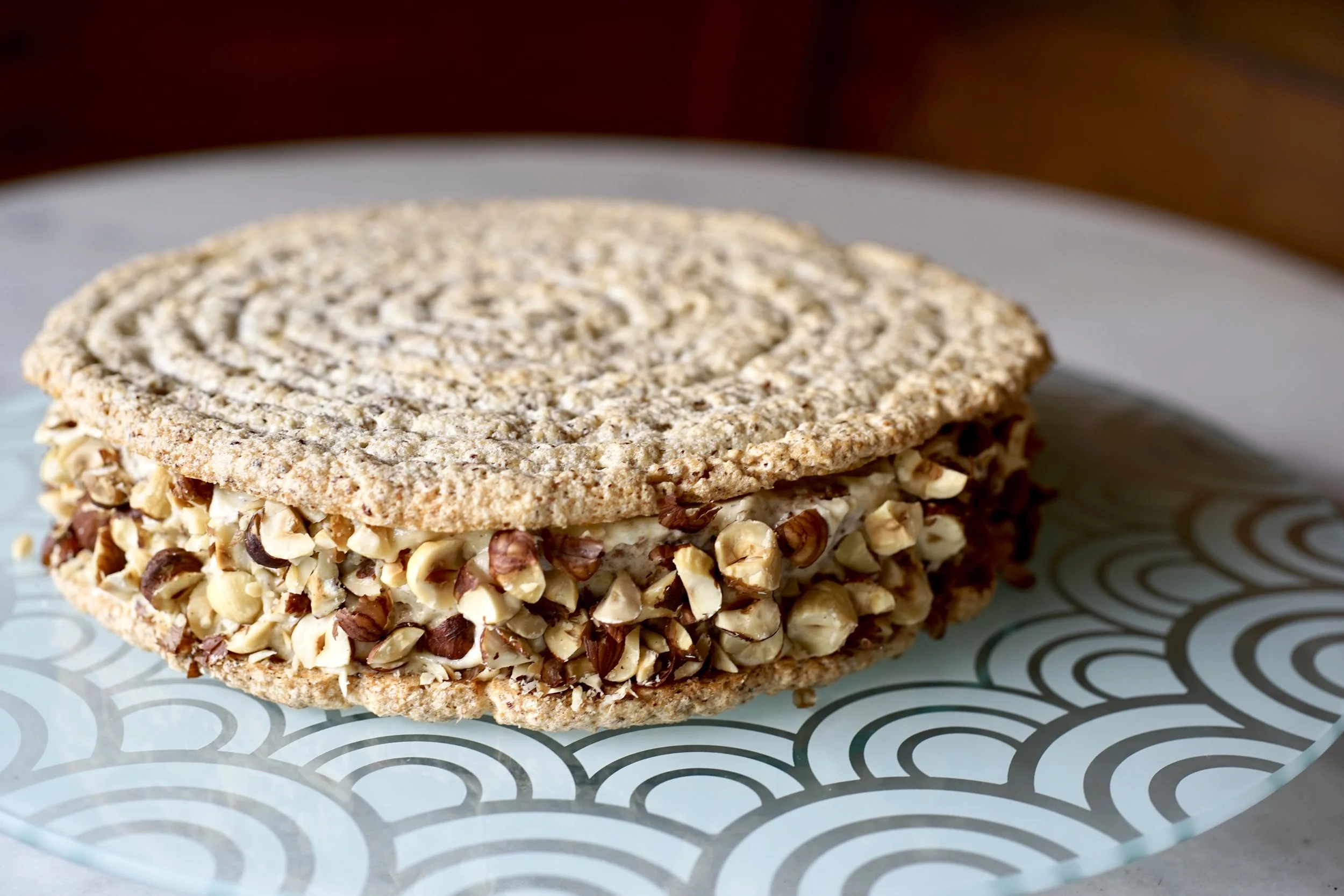Birnenweggen
Sam likes his Birnenweggen (a traditional ‘bread’ with spiced pear filling) in a very specific way, which corresponds to the region he grew up in (canton Lucerne).
The pear breads (also called Birnbrot) of Glarus, Toggenburg and Graubünden won’t do. As far as Sam is concerned, their proportions—a mass of pear swaddled in dough—are all wrong.
Sam needs the swirl.
Although I grew up with the Birnbrot of Eastern Switzerland (and ate the mass of pear with a spread of butter on top), I have come to prefer the Lucernese variety.
If you make it right, the swirl of filling should be equally distributed and you should get a healthy amount of pear in each bite.
Birnenweggen, a history
According to the Kulinarisches Erbe, the Lucernese Birnenweggen and its cousins were born of necessity. When there was a shortage of flour, the dried pears (and other fruits) were added to extend the amount of dough. Big batches could be made and kept for a long time, and in many cases the flavour improved with age.
Typically the breads were eaten around Christmas, and spiced as such, though in the 20th century they began appearing in bakeries and were offered all year round.
In previous times, the pear filling would have been made from scratch from dried pears, but today there are plenty of prepared Birnenweggenfüllung available in supermarkets. The dough varies too, some versions have more pastry-like dough while others, like this one, use an enriched, yeasted dough.
Sam made this Birnenweggen in the closest approximation to his Grosi’s, although she probably made her filling from scratch. We lazily used store-bought, though if you have some dried pears kicking around there is a simple recipe below, and Betty Bossi has a recipe too, adding other fruits and nuts.
500 g flour
12 g salt
300 ml milk, room temperature
20 g fresh yeast, or 2 tsp dry yeast
1 tsp sugar
50 g butter, soft
around 400 g Birnenweggen filling
milk for brushing
In a large bowl, whisk together the flour and salt.
In another bowl, whisk together the milk, yeast and sugar.
Make a well in the flour and add the liquid ingredients. Stir this together until a dough starts to form, then add the butter and begin to knead it on the table. Knead for about 15-20 minutes, or until it is smooth and elastic. Alternatively, mix for about 10 minutes in a stand mixer with a dough hook. Cover with plastic wrap and let rise for about an hour or until the dough has doubled in size.
Preheat your oven to 200° C / 400° F / gas mark 6.
Split your dough into two equal pieces and roll each out into a rectangle.
Spread the filling over the two dough rectangles, leaving a rim around the edge. Roll up the dough, pressing to seal, and then position so that the seal is at the bottom.
Poke all over with a fork, then let sit for an additional 15 minutes.
Brush with milk, then bake for about 30 minutes or until they have browned to your liking.
With plenty of advice from the doyenne of old Swiss recipes, doazmol.
Birnenweggen Filling
500 g dried pears
water
a sprinkle of sugar
ground cinnamon and cloves
1 tbsp lemon juice
shot of kirsch
Place the pears in a medium bowl and cover with water. Let sit for a couple of hours, or until the pears are soft.
Using a food processor or immersion blender, pulse the pears until you get a thick mass. To get the perfect, spreadable consistency, you may have to add a bit more water (or kirsch, perhaps?) when you are blending.
Add the additional ingredients and mix well.
The exact amount of filling is up to you. You can spread thick or thin, depending on your preference.
Birnenweggen filling can be bought ready-made and is available in Swiss supermarkets and the Landi.
For a shinier crust, you can brush with egg yolk instead of milk.
For the filling: some recipes replace the water with red wine—do this if you are feeling adventurous.
More pear?
Toggenburger Schlorzifladen















